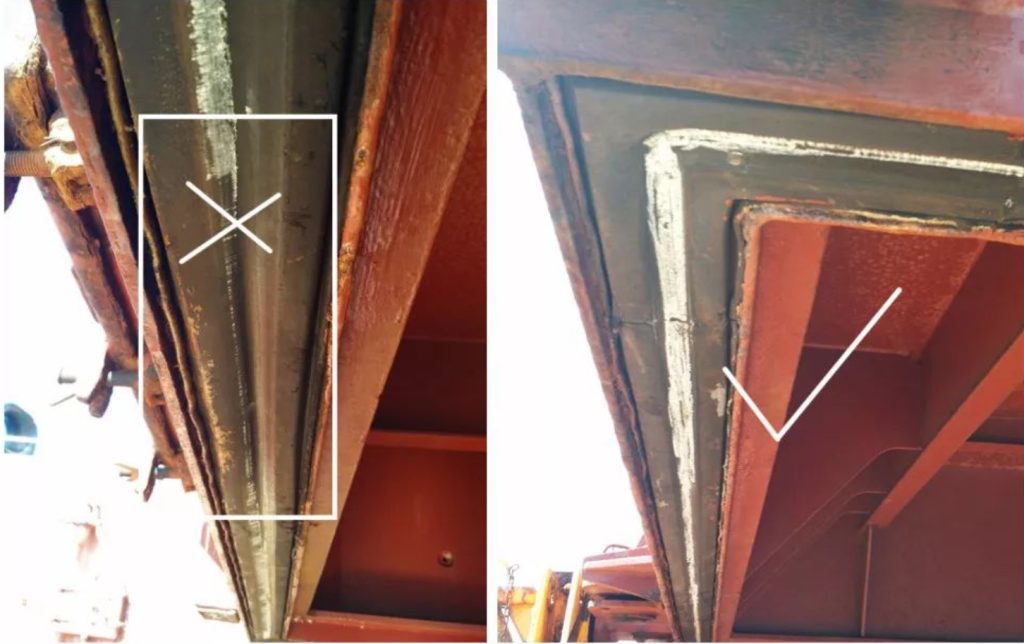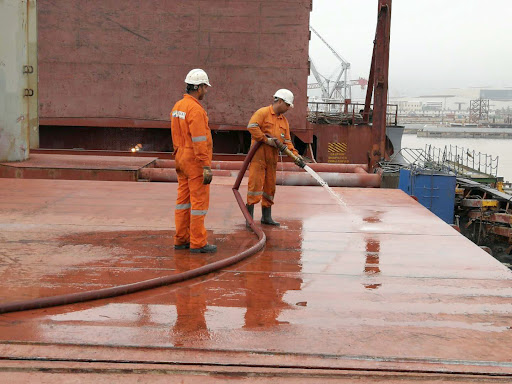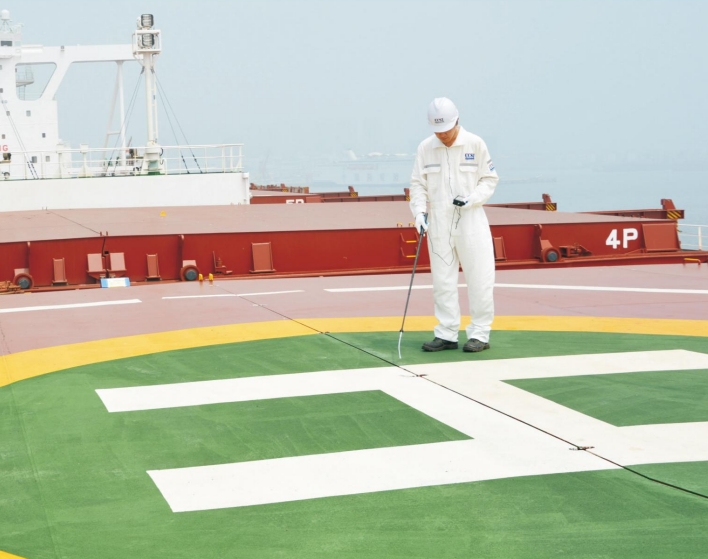Every year, numerous incidents occur where cargo damage leads to claims from cargo owners due to hatch cover defects that fail to ensure watertight integrity. Therefore, it is of vital importance to ensure the watertightness of our ship’s hatch covers. In practical operations, it is necessary to carry out maintenance and inspection of the hatch covers on schedule, promptly identify and correct any issues to guarantee the watertightness of the hatch covers, and ensure the safety of the ship, cargo, and personnel.
Under normal circumstances, the watertightness of ship hatch covers is generally inspected through the following three methods:

- Chalk Test
The chalk test is the most fundamental of the three tests,using chalk to check whether the sealing rubber strip is watertight.The method involves applying chalk to the clamping steel strips on the hatch coaming and the clamping steel strips on the connecting parts between hatch covers.After closing and sealing the hatch cover,it is then opened to check whether there are any chalk marks on the sealing rubber strip of the hatch cover.If there are chalk marks,it indicates that this part is sealed when the hatch is closed.If there are no chalk marks,it indicates that there is a gap in this part when the hatch is closed,meaning that this is the place where water leakage occurs.
This method is simple and easy to operate,requiring no special equipment for testing.It is not restricted by the loading conditions inside the ship or affected by weather and temperature.However,its drawbacks include lower reliability and accuracy.It cannot reflect the degree of hatch cover sealing,but only indicates whether the clamping steel strips are in contact with the sealing rubber strip.It also fails to detect leakage holes caused by severe rust on other parts of the hatch cover.
- Hose Test
The hose test involves using a water jet from a hose with a certain pressure to spray relevant parts of the hatch cover to check whether each part of the hatch cover is watertight.This method is a commonly used test method by ship inspection departments for checking the watertightness of hatch covers.It requires a water pressure of 2-3 kg/cm²,a nozzle diameter of no less than 12 mm,a distance from the tested part of no more than 1.5 m,and the water jet should be as close to a perpendicular angle as possible.
(1) Required Equipment:
- Hose
- Water gun
- Marker pen
- Strong flashlight
- Walkie-talkie
- Telescope(for hatches that are deep and do not have a second deck)
(2) Test Procedure:
- The Chief Officer and the Bosun should respectively direct the testing work inside and outside the hold.
- The hatch cover should be closed and secured in the normal condition for sea voyage, and all other preparatory work should be completed.
- Work outside the hold: Connect the hose and water gun to the deck water system. Spray the connections between hatch covers and the contact areas between the hatch cover and the hatch coaming as required. The speed of the water jet should be maintained at around 3 m/s.The person in charge should communicate with the personnel inside the hold via walkie-talkie and mark any leakage points found.
- Work inside the hold:Due to the darkness inside the hold,use a strong flashlight to illuminate the tested areas and communicate with the personnel outside the hold via walkie-talkie to keep in sync.For ships with deep holds,a telescope can be used to monitor the tested areas and report any leakage promptly.
(3) Advantages and Disadvantages:
This method is proven to be effective.However,it also has certain drawbacks:
- The water flow from the hose may sometimes be insufficient to penetrate the defective areas.
- The testers may not cover all areas during the test.
- It does not provide information on the compression degree of the rubber watertight gasket.
- It cannot be implemented if there are water-sensitive cargoes in the hold or if the ambient temperature is below freezing.

- Ultrasonic Test
Ultrasonic leak detector is widely used for hatch cover tightness testing. It involves placing a sound transmitter inside the cargo hold. A trained operator then measures and compares the decibel levels when the hatch cover is open to check for leaks. Any increase greater than 10%of the decibel level when the hatch cover is open(or the value specified by the equipment manufacturer)can indicate that the hatch cover is not airtight. The main advantages of ultrasonic testing are:
1.It is not affected by weather conditions and can be used to check the watertightness with cargo in the hold.
2. It can accurately identify the location of leaks and provide an indication of the compression degree of the rubber gasket.
